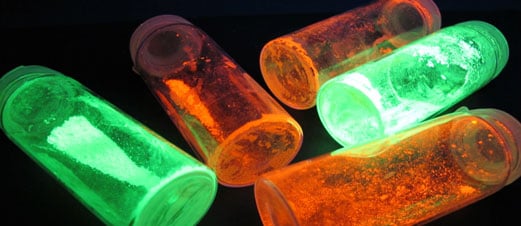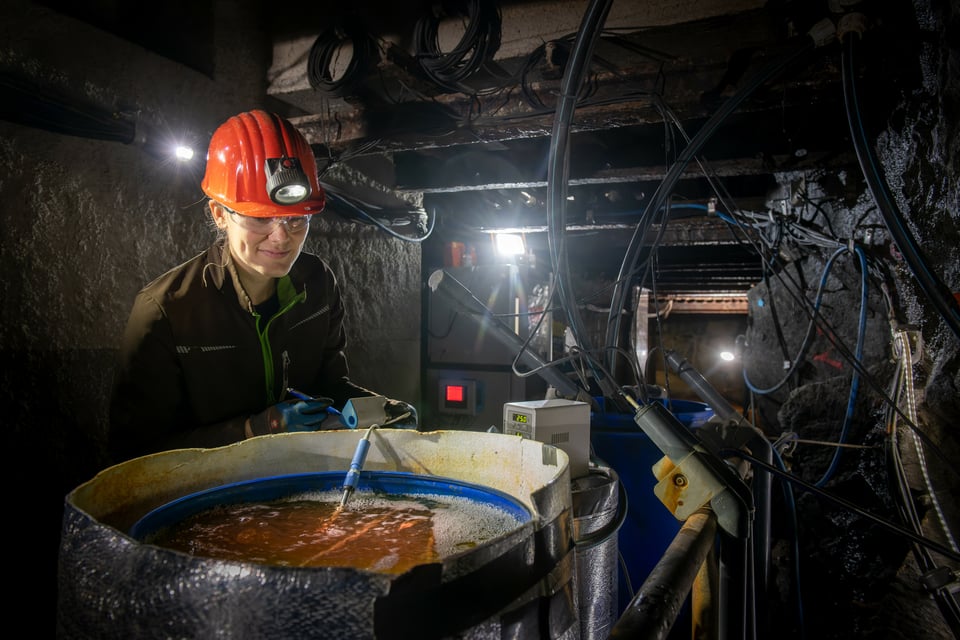Car Science: spelunking for promethium
Hello! You're reading Car Science; please consider subscribing, it's free and helps me.
Hey,
I think I said this was going to be about electrolyte but then Cell Reports did a special on metal-organic frameworks and I went down a hole. There's plenty of time to talk about electrolyte later. Some of this is about electrolyte. Don't hold me accountable to my own, poorly-scheduled newsletter, we've got to talk about rare earth metals.

As you'll be aware, there's a lot of fuss going on about How To Get More Lithium Oh God We Need So Much Of It Aaaargh How Can I Get More at the minute. If you imagine for a second a sort of J Jonah Jameson figure slamming the desk and demanding "I NEED implausible and unproven new ways of extracting lithium" then that's about where the global throws-money-at-things situation is at. Really, what I'm doing writing a newsletter instead of coming up with a scheme to get lithium out of Portugal (the only European country in the top ten of deposits, babey) I don't know, since you can just say you're planning to do the latter and then watch the VC funding come in.
Career choices aside, the race to extract lithium has everyone in a panic. Questions like: is it a good idea to frack the Arctic or use submarines to dive to the bottom of the Pacific and pick up shiny rocks with unknown metallic content or desecrate sacred native American sites or speculate on the humanitarian disaster that is Taliban-governed Afghanistan for lithium get asked so often that it starts looking like the best option would be to completely disassemble the granite batholith Cornwall's built on and blast it apart with high-pressure jets to get some.
Nevermind that we're throwing, in the UK alone, the equivalent lithium of 9 Mercedes EQS cars a month into landfill every month in the form of disposable vapes. We've had a think and decided that it's an editorial priority to interrupt global coverage demonising trans people at least once a month to announce electric cars are a disaster because of mining.
Thing is though, lithium isn't even a rare earth mineral. It quite often gets mentioned in the same breath but it's not - it's abundant and tends to be in significant, concentrated deposits, it's just that they're a bitch to get to, for the most part.
People sort of mumble a bit occasionally about the rare earth metals in EVs and they're not wrong that there are some. Quite a lot, in fact and not just in EVs, in all cars. The rise of touchscreens, in particular (and huge ones, at that, in cars) means the lanthanide element indium is in massive demand.
'What's a lanthanide, Hazel, for fuck's sake' - it's the elements that are hidden in a sort of read more under lanthanum in the periodic table, they all behave very similarly to lanthanum but aren't and all of them are rare earth elements, along with yttrium and scandium.
Which brings us to: what's a rare earth element? Well, it's a bunch of things that aren't particularly rare at all but are really annoying to identify. They're 17 silvery heavy metals that tend to all be found in the same jumble, in not very large amounts. They're a pain to separate but they're just so damn useful for electronics and things like, especially, acting as a catalyst to split hydrogen from water.
Rare earth elements are key components of metal-organic frameworks (MOFs) which is a bit of a lazy catch-all term but basically catalytic meshes of various nano-to-macro degrees that make things happen. Here's a diagram:

I love the crossover in graphic design between science and rave posters.
That diagram's from a really promising new paper in Cell Reports that's snappily titled Rational design and synthesis of diimide-based metal-organic frameworks for lanthanides recovery from tailing wastewater.
Tailing wastewater is anything that comes out of mining, which uses a hell of a lot of water. Rare earth elements are easy to have disappear into that, while other things are being extracted and what with them being so difficult to find and us needing so much of them for everything, recovering them is pretty important.
An early edition of Car Science featured Audi's project for membrane mining tailing water. That project uses bacteria to extract the rare earth elements, whereas this is using the fact that a lot of them react well with nitrogen to pull them out.
Nitrogen's extremely easily available, so although it's a lot more complicated than just adding that to a metal sponge and letting profitable elements drop out (a ligand gets formed with -NH2 as the key reactive part) the fact this can recover specifically rare earth minerals when they're in parts-per-billion quantity, even when there are other elements that are in parts-per-million around them is very encouraging.
One of the reasons I'm excited about this is because electronics recycling sucks ass. Actually, it's too flattering to it to say it sucks ass because that suggests it exists when it functionally doesn't. Either it's laborious, manual deconstruction or it's messy, half-assed panning for the things like gold or more often than not, it's just not done at all.
The suck-ass way to recycle electronics without massive amounts of manual labour is to shred them and pour water over them, then try to pick out the specific elements, which misses the rare earth elements because they're so hard to separate. If this metal-organic framework could be used as part of that process then there's a huge potential to recover them from both existing stockpiles of electronic waste and to build devices in the future with this in mind.
In the meantime, please enjoy this picture of a scientist looking at some tailing water being digested by bacteria like the Soup Dragon from the Clangers.
Delicious rock soup:

And that's about it for Car Science this week. As always, I'm proper grateful if you like, subscribe, share, print out and stick to your fridge if you like cus every little helps innit.
Next week on Wednesday: are EVs really collapsing Manhattan parking lots or are landlords just negligent bastards and a Friday edition about AI road rage.
Hazel
x
Images:
Luminescent lanthanides (via Ghent University's Luminescent Lanthanide Lab)
A metal-organic framework to remove lanthanides from wastewater (via Cell Reports)
Scientists working on membrane mining from tailing water for rare earth elements (via Audi)